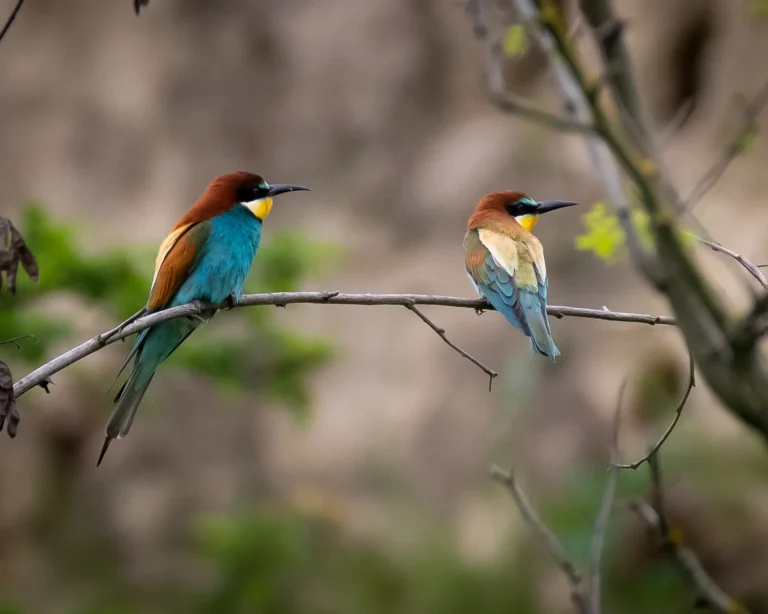
European bee-eater

Description and how to observe European bee-eater:
The European bee-eater is a bird with brightly coloured, easily recognisable plumage. It has a long slender beak, ideal for catching insects in flight. Its vibrant colours - green, blue, yellow and brown - make it stand out against the backdrop of delta vegetation.
To spot the European bee-eater, look for open areas with bushes and reeds, especially near the water's edge. Look for a medium-sized bird with a fast, direct flight that catches its food in the air.
What it feeds on European bee-eater:
European bee-eater feed mainly on insects, with a particular preference for bees and wasps. Because of this diet, it is often considered a pest by beekeepers.
Threats:
The main threats to the European bee-eater are habitat destruction, pesticide use and climate change. The collection of eggs and chicks is also a significant threat to this species.
Ecological role:
More information on Merops apiaster:
- Observation period: The best time to spot the European bee-eater is during the nesting season between April and September.
- Observation sites: The Danube Delta, especially in areas with reeds and bushes.
- Protection: European bee-eater is a legally protected species.
Photography tips:
- Telephoto lens: To get close-up and detailed photos.
- Tripod: To stabilise the camera and avoid blurred images.
- Patience: European bee-eater is a wild bird and can be shy, so you need patience to photograph it.
- Respecting the environment: Don't disturb birds or destroy their habitat.
Discover now the most beautiful places in the Danube Delta!
In the following pages, you will find detailed information about:
- Top tourist destinations: Traditional villages, nature reserves, tourist trails and much more.
- Activities and attractions: Everything you need to know about boating, fishing, bird watching, cycling and other activities.
- Accommodation and catering: Accommodation to suit all budgets and restaurants serving traditional cuisine.




